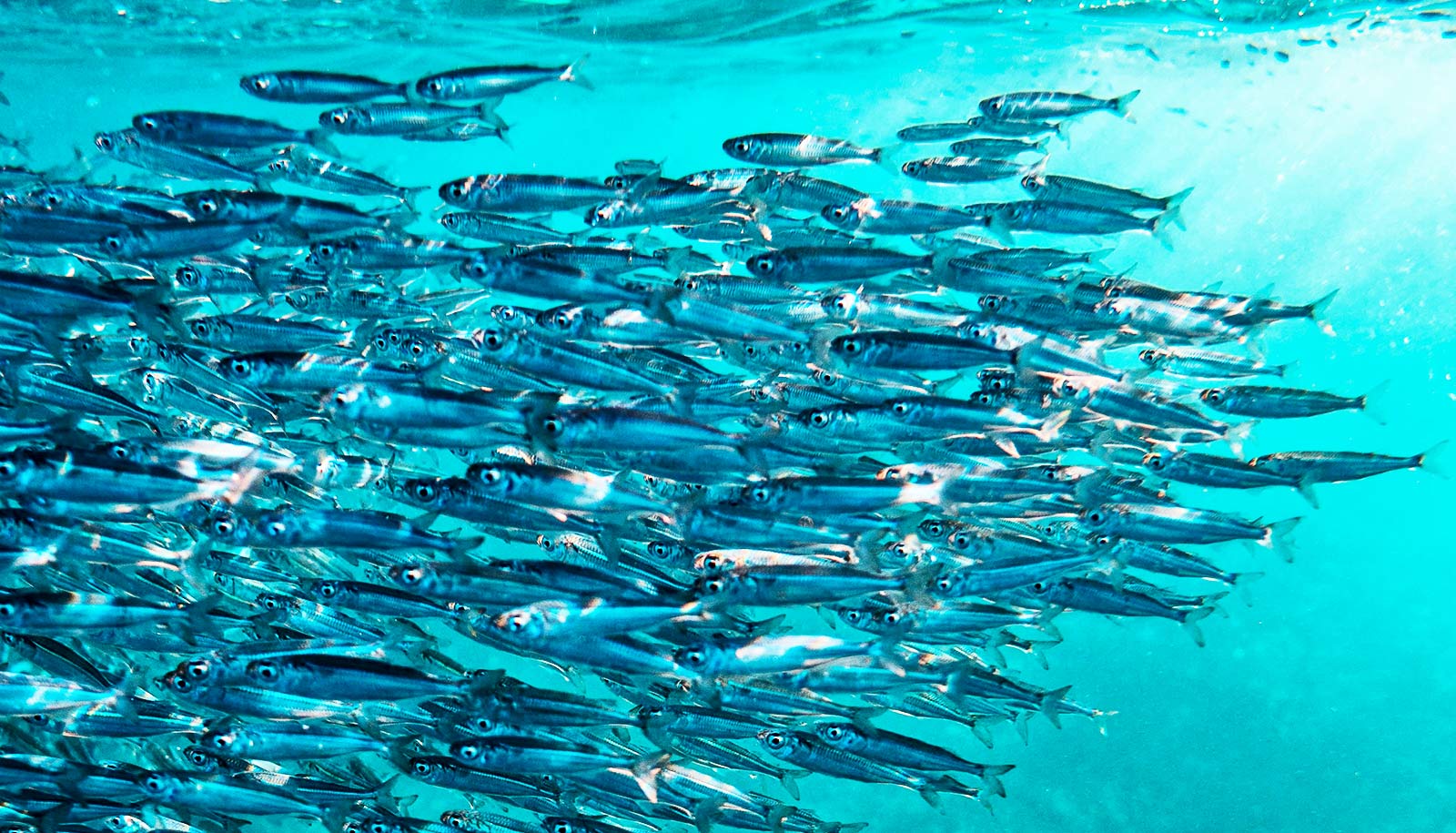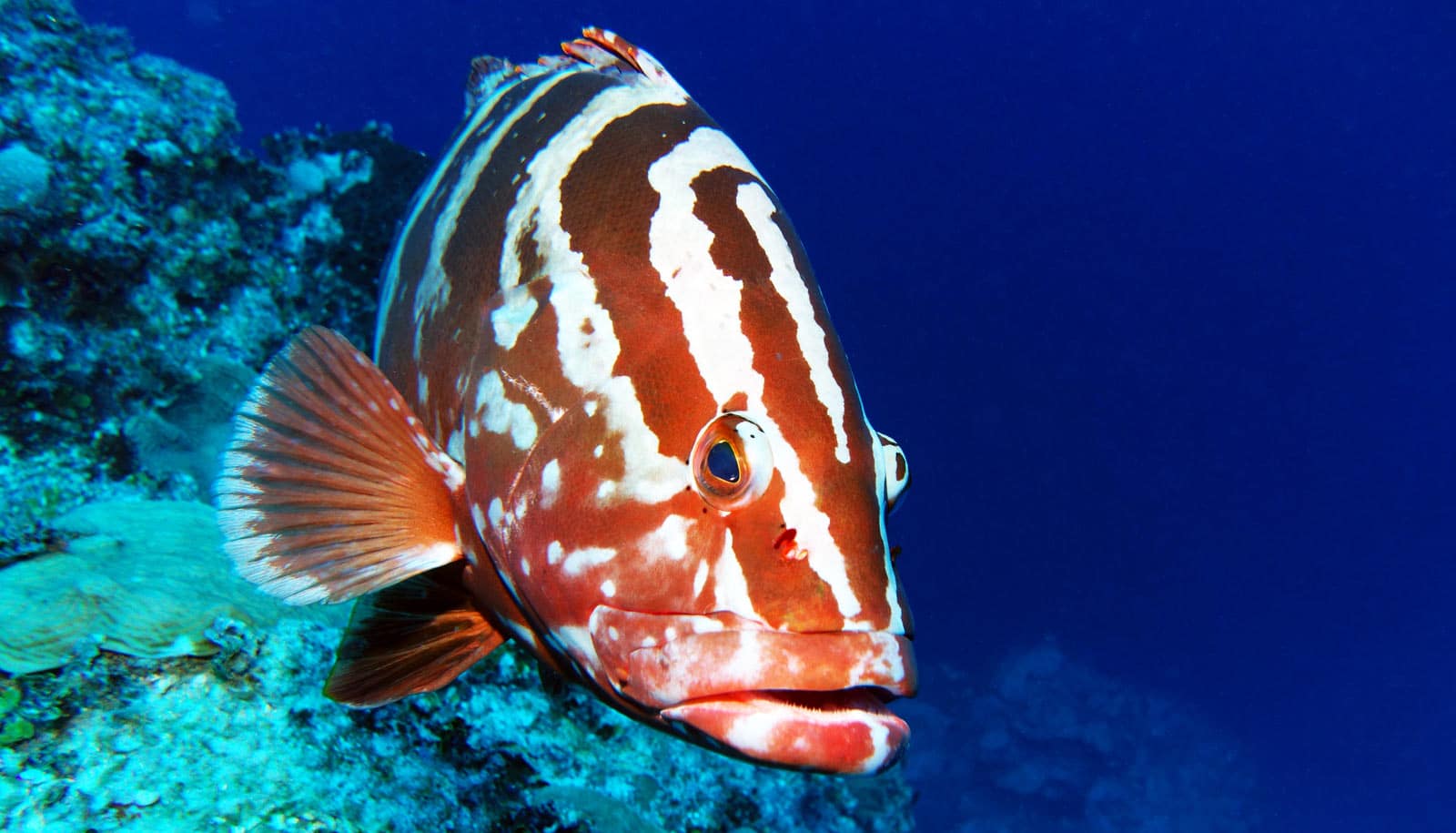
"If what happens in these models is actually playing out in the ocean, it means we may keep catching fish schools, thinking everything is fine," Douglas McCauley says. "Until we catch the last school. And discover that everything is not fine." (Credit: Clint Bustrillos/Unsplash )
Fish might stop swimming in schools
For millions of years, fish have formed schools as a means of survival. Mass capture fishing technologies may put an end to that.
Modern industrial fishing technologies may threaten the practice of fish swimming in schools, a new study shows.
Life on Earth is all about strategies for survival, with every organism developing behaviors and bodies that maximize chances of staying alive and reproducing while minimizing the likelihood of being injured or eaten.
Fish are one such example. For millions of years, many species have evolved a safety-in-numbers strategy that confuses predators and ensures the survival of the maximum number of individuals as they move about in the ocean.
But now, due to modern industrial fishing practices and technologies, schooling behavior may become less common.
“The findings from our model suggest that industrial fishing can decrease the tendency of fish to form large groups,” says Ana Sofia Guerra, a graduate student researcher at the University of California, Santa Barbara and lead author of a paper in the Proceedings of the Royal Society B .
This change in behavior has implications for both the fish and their predators, including humans, researchers say.
“People have been studying fisheries science for centuries,” says coauthor Douglas McCauley, an associate professor of ecology, evolution, and marine biology. “But we’ve never considered: Could modern fishing technology be killing schooling behavior?”
“Suddenly the sardine in a big school is a lot more vulnerable to a human predator than one that prefers smaller schools or a solitary lifestyle.”
Indeed, the capacity to extract large amounts of fish from the ocean has grown in the past several decades, with ships and fleets able to access and fish from even remote areas of the ocean. Purse-seining and trawling both involve deploying enormous nets that target large groups of fish. Drones and spotter planes increase the efficiency of these mass-capture methods.
“One of the reasons schooling behavior exists is to avoid a predator attack, but by developing technology that can capture entire schools, we have turned the tables on that strategy,” Guerra says.
Solitary fish instead of schools?
To better understand this effect, researchers constructed an evolutionary fission-fusion model to simulate the behavior of individual schooling fish faced with different levels of predation, both natural and human. The model describes changes in fishes’ preference to form large schools while subjected to different levels of human fishing pressure and natural predation.
“Our models suggest fishing could very easily be changing fish behavior in ways that affect both fish and fishers.”
The results show that the larger the prevalence of mass-capture practices relative to natural predation, the more individual fish preferences shift toward smaller group sizes.
“Suddenly the sardine in a big school is a lot more vulnerable to a human predator than one that prefers smaller schools or a solitary lifestyle,” Guerra says. Collectively, this change in preference will result in smaller groups and more solitary individuals.
In fact, this change could have several impacts, the researchers say. For one thing, natural predators that rely on these fish also have evolved hunting methods based on the fishes’ tendencies to travel in large groups.
“We are not the only predators who have figured out how to exploit schooling fish,” Guerra says. Seabirds and pelagic predators often coordinate their attacks. Humpback whales corral herring using “bubble nets” before swooping in, although their ability to exploit schools is not as effective or expansive as that of humans.
“By altering schooling behavior, we could actually impact marine predators that rely on schooling fish,” she says.
Changing fish behavior
It’s a socioeconomic issue, too. Forage fish, which include anchovies, herring, and sardines, are a large segment of the global fishing industry , valued at $16.9 billion. The economy and efficiency of their capture makes them the basis of thousands of livelihoods. Changes in their schooling behavior might require more time, effort, and resources to catch them, which puts the fisheries in a vulnerable position.
Is it reversible? Yes, but only after a lag that would allow the fish to evolve their preferences similar to those observed in the absence of fishing, according to the paper.
“If you wanted to reverse the effects of fishing on a fish population’s tendency to school, you would have to reduce fishing to a much lower level than what it took to cause the effect in the first place,” Guerra says.
Especially worrying is their finding that it is difficult to see these impacts on schooling until it is too late—data are incomplete at best.
For example, data from purse-seining operations will focus on large schools and ignore the smaller schools. “If what happens in these models is actually playing out in the ocean, it means we may keep catching fish schools, thinking everything is fine,” McCauley says. “Until we catch the last school. And discover that everything is not fine.”
This wouldn’t be the first time large-scale fishing has introduced evolutionary pressures into fish populations. For instance, the practice of selecting for the largest individuals, has, generation over generation, produced smaller adults in some species.
“Because we consistently harvest the largest fish in the population, it has become an advantage for them to be smaller—they are less of a target and therefore more likely to survive and reproduce,” Guerra says.
“With intense fishing pressure, it is also advantageous to reproduce earlier at a smaller size.” This phenomenon has already occurred with salmon in the Atlantic and Pacific Oceans, in Europe and North America.
This research is an investigation into the area of the behavioral consequences of targeting large schools, a rather underexplored area of fishery science. Most research assumes that fish behaviors don’t change.
“Fishery science sometimes tends to treat fish as just numbers on an accounting sheet,” McCauley says. “Our work reminds us that fish are not just numbers. They are living animals with behavior.
“We know from many contexts that hunted animals can shift behavior slowly to evade capture—this seems to be possible for fish as well,” he says. “Our models suggest fishing could very easily be changing fish behavior in ways that affect both fish and fishers.”
Additional coauthors are from the Santa Fe Institute and the University of Washington.
Source: UC Santa Barbara
The post Fish might stop swimming in schools appeared first on Futurity .
Share this article:
This article uses material from the Futurity article, and is licenced under a CC BY-SA 4.0 International License. Images, videos and audio are available under their respective licenses.
Related Articles:
Fish might stop swimming in schools
Oct. 2, 2020 • futurityHiding spots and predators benefit reef fish
Oct. 3, 2019 • futurityLinks/images:
- https://www.futurity.org/swimming-fish-school-energy-speed-2201992/
- https://doi.org/10.1098/rspb.2020.1752
- https://www.futurity.org/parrotfish-predators-1405102/
- https://www.futurity.org/wealthy-nations-fishing-oceans-1829692/
- https://www.futurity.org/invasive-species-robot-fish-2161452/
- https://www.news.ucsb.edu/2020/020044/unintended-consequence
- https://www.futurity.org/fish-schools-commercial-fishing-2448392-2/
- https://www.futurity.org

